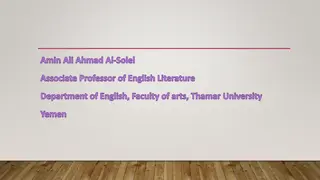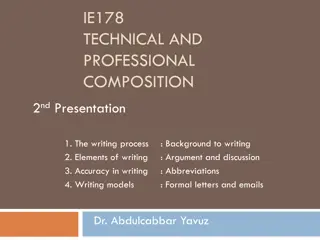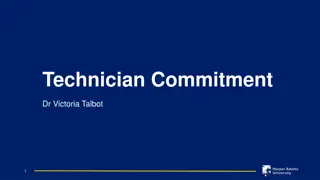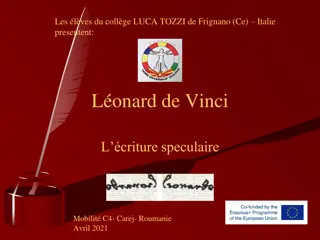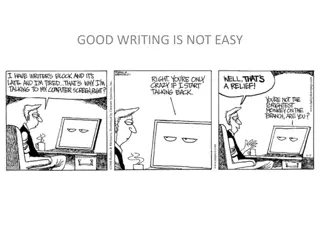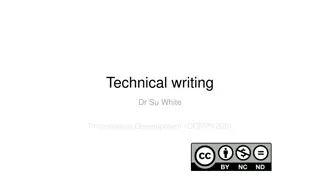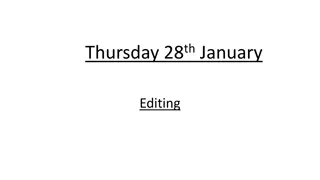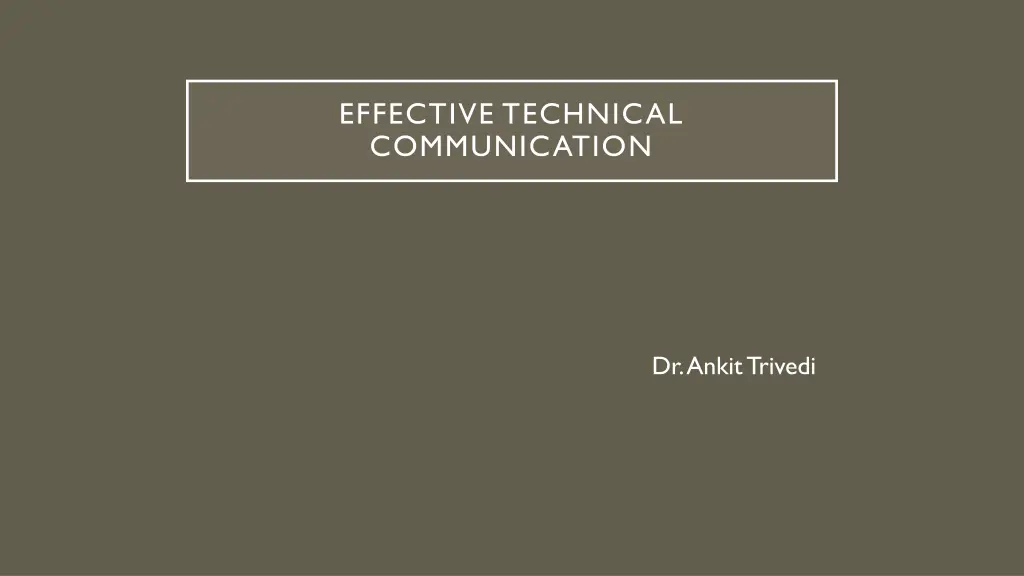
Mastering Technical Writing for Effective Communication
Discover the essential elements of technical writing, including its purpose, characteristics, and importance in various industries. Learn about the technical writing cycle, traits of effective technical writing, and the significance of clarity, accuracy, and accessibility in communicating complex information to diverse audiences.
Download Presentation

Please find below an Image/Link to download the presentation.
The content on the website is provided AS IS for your information and personal use only. It may not be sold, licensed, or shared on other websites without obtaining consent from the author. If you encounter any issues during the download, it is possible that the publisher has removed the file from their server.
You are allowed to download the files provided on this website for personal or commercial use, subject to the condition that they are used lawfully. All files are the property of their respective owners.
The content on the website is provided AS IS for your information and personal use only. It may not be sold, licensed, or shared on other websites without obtaining consent from the author.
E N D
Presentation Transcript
EFFECTIVE TECHNICAL COMMUNICATION Dr. Ankit Trivedi
TECHNICAL WRITING Technical writing is a type of writing where the author is writing about a particular subject that requires direction, instruction, or explanation. This style of writing has a very different purpose and different characteristics than other writing styles such as creative writing, academic writing or business writing. Today technical writing encompasses all documentation of complex technical processes. It includes reports, executive summary statements, briefs. Any time technical information is conveyed in writing at work, it is, by definition, technical writing. This can include high-tech manufacturing, engineering, biotech, energy, aerospace, finance, IT, and global supply chain.
Technical writers often create diagrams to show users how a product works.Technical writers, also called technical communicators, prepare instruction manuals, how-to guides, journal articles, and other supporting documents to communicate complex and technical information more easily.
FIVE TRAITS OF TECHNICAL WRITINGS The 5 traits are accuracy, accessibility, conciseness, and clarity, and audience recognition. Accuracy-Accuracy refers to the truthfulness and the variety of a given statement. It basically refers to "getting the facts straight". Accessibility- Means the ease of which the readers can locate the information they seek. To increase accessibility, include headings, lists of reports, or a table of contents. Conciseness-Technical writing is supposed to be clear, so having a massive document that takes time to read, will get very hard for the reader to read after a while. So it is good to stay clear, and try to keep the reader reading.
Clarity-A technical writing document needs to have a single reading that the reader can understand. Unclear technical writing is bad. Unclear technical writing can also be dangerous. For example, unclear information on how to operate machinery. So staying clear in the writing is a good idea. Audience Recognition-This aspect is based around the audience, and how well they understand the writing. If your audience can't understand your writing, then there will be no way to adapt to your own writing. Meaning that if you have writing that the audience can't understand, than your writing looks bad and nobody will read it.



